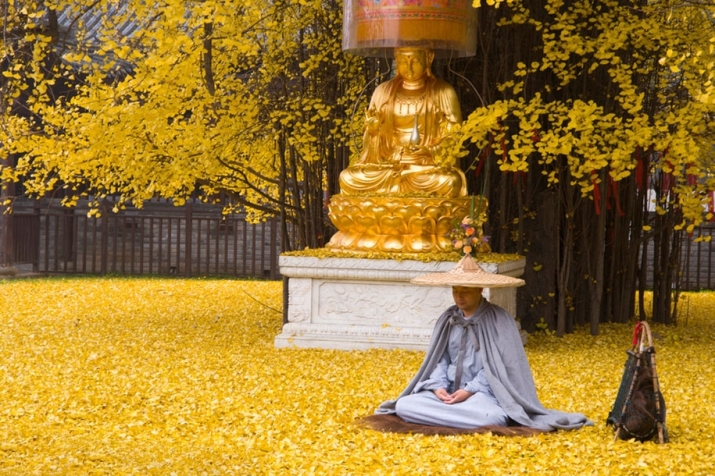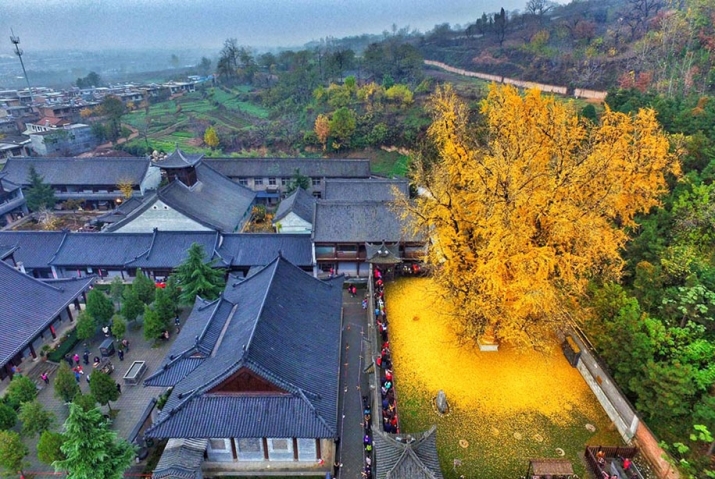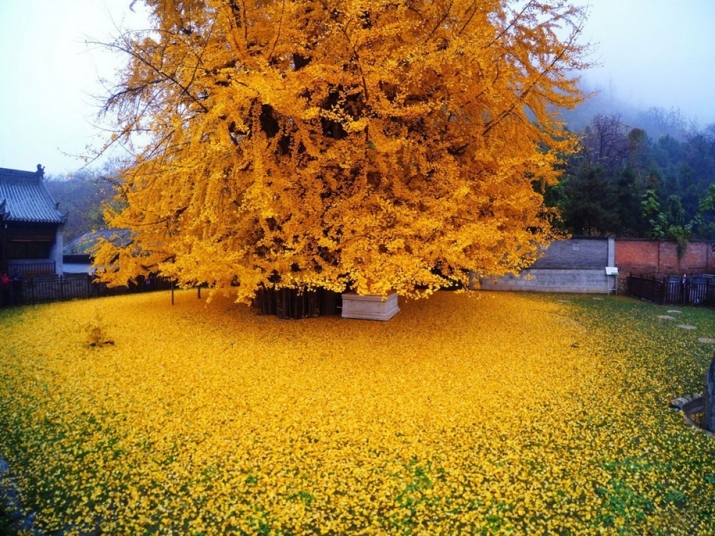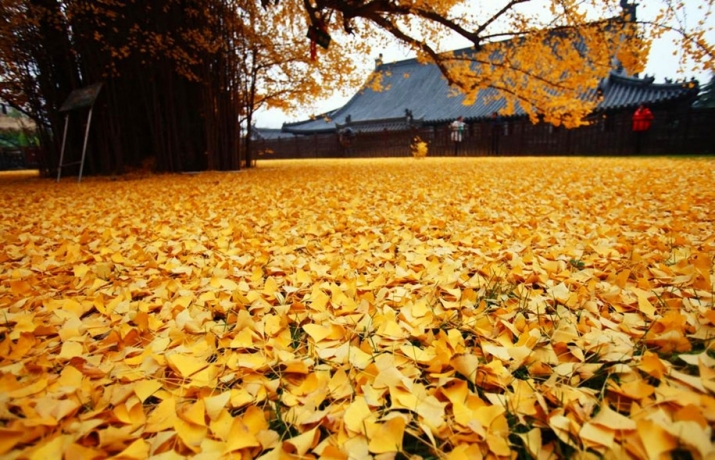NEWS
Each Autumn, This Ancient Gingko Tree Rains Gold Upon a Buddhist Temple in China
 From demilked.com
From demilked.comEvery autumn at the Gu Guanyin Buddhist temple in the Zhongnan Mountains of China’s Shaanxi Province, a remarkable transformation of breathtaking beauty takes place when the leaves of the 1,400-year-old ginkgo tree that towers majestically over the temple compound slowly turn from green to yellow with the shifting season, and rain an ocean of gold over the surrounding courtyard, a dramatic splash of color amid the muted tones of its surroundings.
The ancient ginkgo tree is popularly believed to have been planted for the Tang dynasty (618–907) emperor Li Shimin (r. 626–49), widely considered to be one of the greatest emperors in China’s history and during whose reign the country flourished economically and militarily.
 From demilked.com
From demilked.comThe ginkgo tree (Ginkgo biloba) is one of the oldest species of tree in the world, and the only remaining species of the now extinct Ginkgophyta division. The tree is often referred to as a “living fossil,” with fossils recognizably related to modern ginkgo dating back 270 million years. For this reason, it's often known as a "living fossil," since it dates back to a time when dinosaurs still roamed the Earth. Having been been cultivated for thousands of years, it is a protected tree in China and holds a special status in Buddhism and Confucianism, and as a result is also widely cultivated in Korea and Japan. The species, which can sometimes exceed 50 meters in height and live up to 2,500 years, is also a source of food in the form of ginkgo nuts, while the tree also provides a variety of ingredients used in traditional medicines and health supplements.
Visiting the venerable tree at Gu Guanyin, in the provincial capital of Xi’an, is a key part of autumn festival celebrations for local residents, although since the tree's fame has begun to spread, hundreds of people from across the country and overseas now flock daily to the temple during autumn, hoping to witness this unique spectacle, which usually takes place from mid-November.
 From demilked.com
From demilked.comThe Zhongnan Mountains are a section of the Qin Mountains—an expansive east–west mountain range in southern Shaanxi Province that creates a natural boundary between northern and southern China. The Qin Mountains are notable for supporting a multitude of plant and wildlife species, including the native ginkgo tree. Among the many other places of interest in the Zhongnan Mountains is Louguantai Temple, where the Taoist sage Laozi is believed to have dwelt and composed the Tao Te Ching. Buddhist monks began living in the mountains following the introduction of Buddhism to China from India, between the 1st and 3rd century.
 From demilked.com
From demilked.comSee more
Every Autumn, This Ginkgo Biloba Tree Sheds an Ocean of Golden Leaves (Town & Country)
This Ancient Ginkgo Tree is Beautifying a Buddhist Temple With Autumn Showers of Yellow Leaves (Expat Post)
1,400-Year-Old Ginkgo Tree Creates An Ocean Of Perfectly Yellow Leaves In The Fall (wimp.com)
1,400-year-old tree sheds golden leaves on an ancient temple (Lost At E Minor)
1,400-Year-Old Chinese Ginkgo Tree Is Drowning A Buddhist Temple In A Flood Of Golden Leaves (deMilked)
Related
The Lion Hut of Empty Cloud (Buddhistdoor Global)














